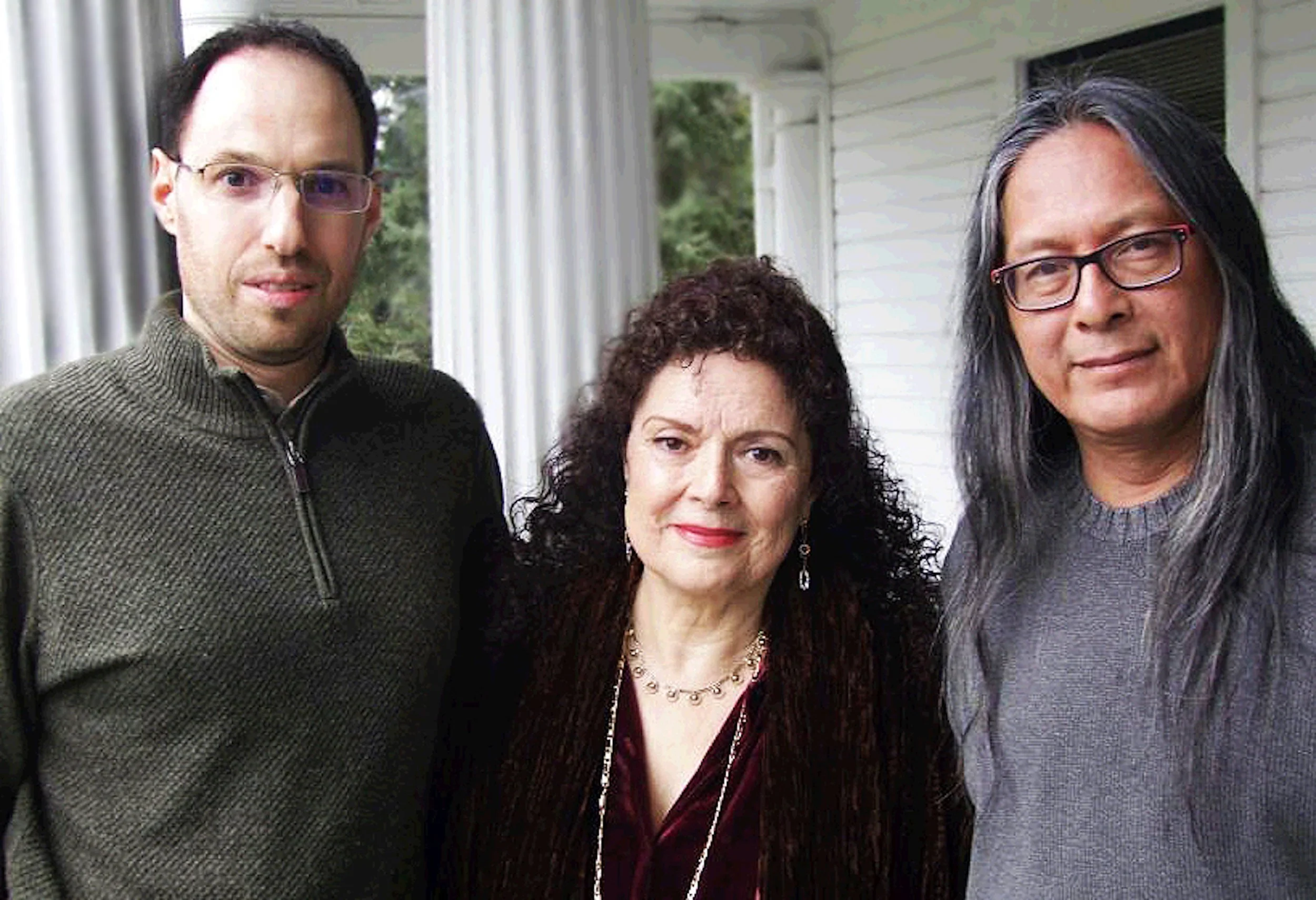Once more, with healing
Siletz Bay Music Festival honors Native wisdom at final show
Ethan Gans-Morse, Tiziana DellRovere and Brent Florendo • Photo by Chava Florendo.
By Eliot Sekuler
For the TODAY
It was an undertaking that presented artistic and cultural challenges and required an exceptional openness to creative partnership.
“How Can You Own the Sky?” subtitled ‘A Symphonic Poem Honoring Native Wisdom,” will be presented this Sunday, Sept. 3, at Chinook Winds Casino Resort as the final half of the “Sounds of the Americas” program, the closing event of this year’s Siletz Bay Music Festival.
Two years in the making, the music of “How Can You Own the Sky?” is the fruit of an extraordinary collaboration aimed at bridging two cultures, addressing horrific events of the past and contributing to the process of healing and understanding.
The inception of the project dates back to 2016, when the Rogue Valley Symphony approached composer Ethan Gans-Morse and his partner, poet and librettist Tiziana DellaRovere, to create a new piece that would help celebrate the symphony’s 50th anniversary. Given wide latitude to choose their direction, Gans-Morse and DellaRovere chose to use that opportunity to honor the Rogue Valley’s Native American history and heritage.
“The Rogue Valley is known for its natural beauty and for its art, but I didn’t want to write about any of that,” DellaRovere said. “I told Ethan that if we were to write this piece, we’d have to relate to the history of this valley and the most important thing was the history of the Native American tribes and what happened to them. For me, that’s the essence of this valley.”
Neither Gans-Morse nor DellaRovere have any grounding in native tradition. They realized the necessity of partnering with someone who could imbue the project with authenticity and found that partner in the person of Brent Florendo, a descendant of Wasco, Warm Springs and Yakima Indians and a professor of Native American studies at Southern Oregon University, where he also served as the school’s Native Nations Liaison. Under Florendo’s tutelage, DellaRovere and Gans-Morse embarked upon immersive studies in the history and traditions of the Southern Oregon native people.
“There was a great amount of depth and time taken by Tiziana and Ethan before they really started working on the art part of the project,” Florendo said. “They saw the importance of that and it’s a tribute to them that they took the time to do that work before writing the piece. When you’re presenting a piece that has to do with Native American culture, it’s important to act in good faith with what you do.”
Florendo’s role in the piece evolved into full-fledged collaboration. He composed a song for the project and the performance begins with the singing and drumming of that melody by Florendo the Dancing Spirit Ensemble, which consists of members of his family.
“We knew from the beginning that we wanted Brent to perform something,” Gans-Morse said. “And when Brent came to me with that song, I knew it was a very exciting thread to work with."
Florendo’s song, sung and drummed with the Dancing Spirit Ensemble, opens and closes the piece and the melody is woven throughout the entire composition, a musical thread that connects the four movements of the piece.
“It has a very different meaning in each of the four movements,” Gans-Morse said. “In his notes, he described the structure of the composition as ‘a journey in four stages, from the legend of creation, through the trials of the first peoples of Southern Oregon, into the devastation of the Rogue River Wars and finally toward a more hopeful future of peaceful reconciliation, healing of past wrongs, and a return to Native American teachings of greater harmony with our world and all its inhabitants.’”
DellaRovere’s evocative poetry, read in performance by Florendo, serves as an introduction to each movement and acts as the poetic narration of the journey. Writing the poetry was a lengthy undertaking for DellaRovere. Introduced by Florendo to elders of the Takelma tribe, she immersed herself in the history of the people and their creation myths before composing her epic poem.
“It was important to create this piece in a way that was respectful and humble,” she said. “It was important that the people we’d be talking about would feel honored and appreciated instead of feeling used.”
The history is one of genocidal displacement. Beginning in 1856, the Takelma people, along with other indigenous Southern Oregon people, were herded hundreds of miles in a “trail of tears” to the newly established Siletz reservation. Many of them died along the way as a result of the brutal conditions that awaited them.
Because his festival bears the name Siletz, festival artistic director Yaacov “Yaki” Bergman believes that “How Can You Own The Sky?” is especially relevant to the festival program. “Given both the history and geography of this area and the story that it tells, this piece is tailor-made for us,” said Bergman, who first conducted it in 2022 with the Walla Walla Symphony.
The concert will mark the fifth performance for “How Can You Own the Sky?” and for the first time, will feature a visual component created by Native American photographer Joe Cantrell, whose art will be projected behind the orchestra.
“We want the concert to be of service to the community, to the Native American people and, by extension, to the broader community so they can connect to Native Americans,” said Gans-Morse, noting the extraordinary amount of work that has gone into the creation of the piece. “It has been a labor of love.”

